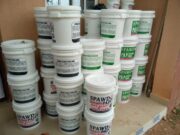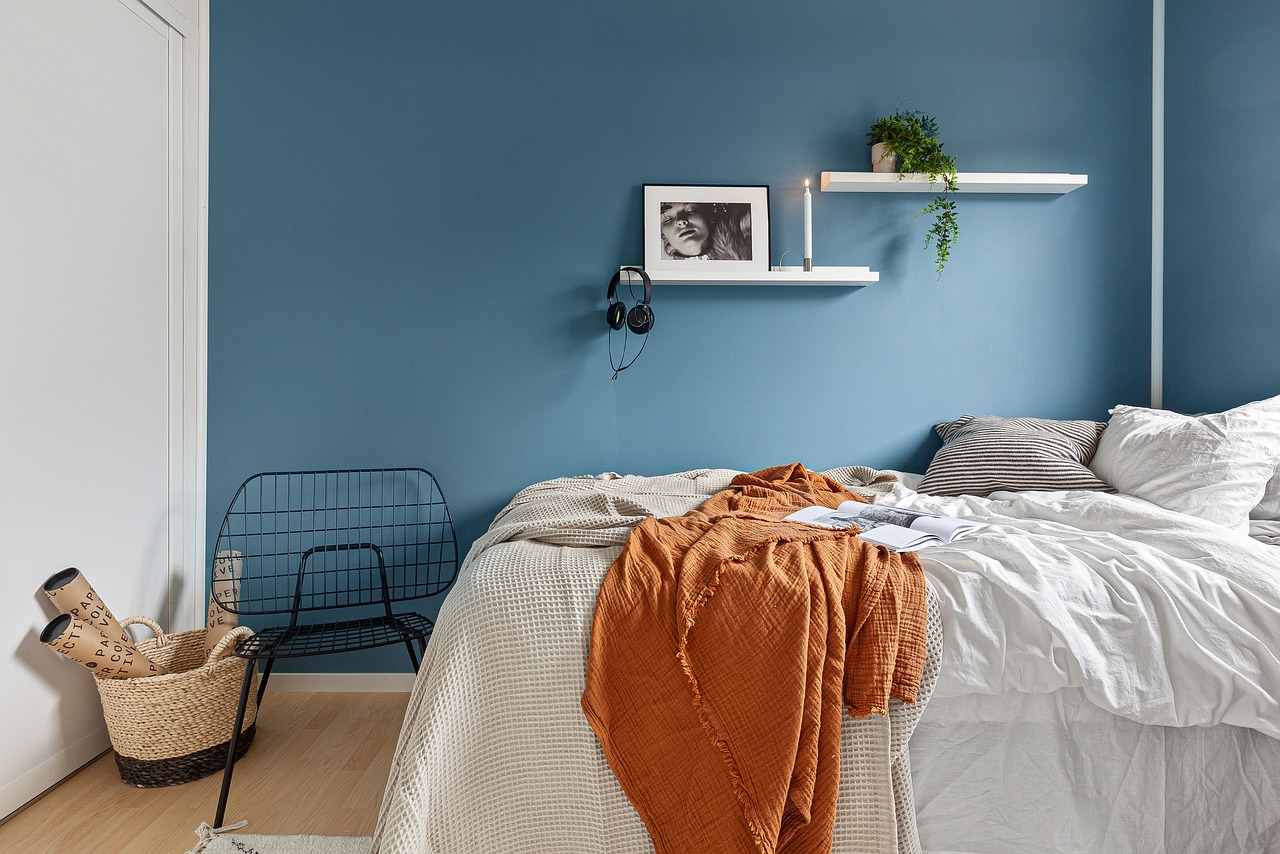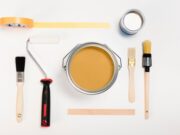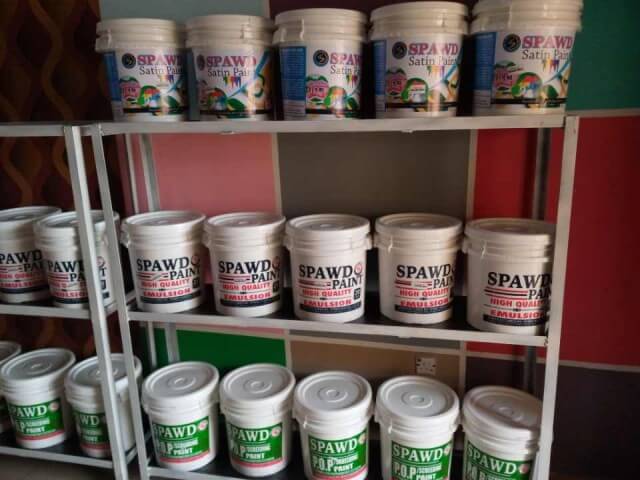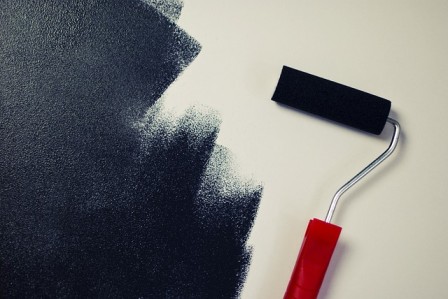When it comes to painting your walls, using the right roller can make all the difference between a professional-looking finish and a learner’s work.
Choosing the best roller for painting walls is very important, as it directly impacts the ease of application, the quality of the finish, and the overall satisfaction with your work.
Whether you’re a professional painter, a DIY enthusiast, or someone who wants to learn, understanding the different types of rollers and their specific uses will ensure you achieve the best results in your project.
In this comprehensive guide, you will learn about the various types of paint rollers, their benefits, and how to select the best one for your specific painting needs.
What Are The Basics Of Paint Rollers?
Before we begin, you must understand the basic components of a paint roller as this will determine how you choose the best roller for painting walls.
- The Roller Frame
This is the handle and the structure that holds the roller cover. It is the part you hold while painting.
The frame’s quality can affect your control and comfort during painting so you understand this.
- The Roller Cover
This is the part of the roller that holds and applies the paint. It is available in various materials and naps (the thickness of the cover), each suited for different surfaces and finishes.
- The Roller Nap
The roller nap refers to the thickness of the roller cover’s fibers. The nap height and thickness determine how much paint the roller holds and how it applies the paint to the surface.
Types of Paint Rollers
There are several types of paint rollers available, each designed for different surfaces and finishes.
Understanding these types will help you choose the best roller for painting walls.
Here are the types of paint rollers that we have.
- Foam Rollers
Foam rollers are the types of rollers that are ideal for applying smooth, even coats of paint.
They are particularly useful for painting flat surfaces, such as walls, ceilings, cabinets, and doors.
Foam rollers are best suited for,
1. Smooth surfaces
Foam rollers work well on smooth surfaces like drywall or wood. They leave a minimal texture, which is perfect for creating a sleek finish.
2. Water-based paints
These rollers are excellent for water-based paints, such as latex ( emulsion, satin, etc).
They absorb and release paint evenly, preventing streaks and roller marks.
However, foam rollers are not suitable for rough or textured surfaces as they may not apply paint evenly.
They also tend to wear out quickly, so they may not be the best choice for large projects.
- Short Nap Rollers
Short nap rollers typically have a nap length of 1/4 inch or less.
They are designed for smooth to semi-smooth surfaces and are best used with thin paints or primers.
These rollers are ideal for,
1. Smooth surfaces
Like foam rollers, short nap rollers are excellent for smooth surfaces, such as drywall, plaster, and previously painted walls.
2. Low-sheen paints
They work well with flat or satin finishes, as they leave a subtle texture that enhances the paint’s appearance.
Short nap rollers are not recommended for textured surfaces, as they may not hold enough paint to cover the surface adequately.
- Medium Nap Rollers
Medium nap rollers usually have a nap length of 3/8 inch to 1/2 inch.
These types of rollers are versatile and can be used on a variety of surfaces, including lightly textured walls and ceilings.
They are suitable for,
1. Semi-smooth surfaces
Medium nap rollers are a great choice for surfaces with minor imperfections, such as light-textured drywall or slightly rough-plastered walls.
2. Versatile paint types
These rollers work well with both water-based and oil-based paints. They provide a consistent finish.
Medium nap rollers are the most popular choice for most interior painting projects due to their versatility and ability to handle a range of surface textures.
- Long Nap Rollers
The long nap rollers usually have a nap length of 3/4 inch or more.
These rollers are designed for rough or heavily textured surfaces and can hold a significant amount of paint, making them ideal for,
1. Textured surfaces
Long nap rollers are perfect for rough surfaces like stucco, brick, and concrete.
They can reach into the crevices of these textures, ensuring even coverage on your walls.
2. Exterior projects
These rollers are often used for exterior painting projects, where the surfaces are typically more rugged and require more paint to cover.
While long nap rollers are excellent for textured surfaces, they may not be the best choice for smooth surfaces, so choose wisely as they can leave a heavy texture and may cause drips or splatters.
How To Select The Best Roller for Painting Walls
Now that you understand the different types of paint rollers, how do you choose the best roller for your specific project?
Here are some factors to consider before making your final decision,
1. Consider The Surface Texture
The texture of the surface you want to paint is one of the most important factors in selecting a roller.
Here’s a quick guide,
For smooth surfaces, always use a foam or short nap painting roller for a sleek, smooth finish.
Meanwhile, for semi-smooth surfaces, a medium nap paint roller is ideal for surfaces with minor imperfections.
Lastly, for rough or textured surfaces always go for a long nap paint roller to ensure even coverage and reach into all the crevices on your walls.
2. Consider The Type of Paint You Want To Use
The type of paint you will use for your painting project also influences your roller choice.
If you are going to use water-based paint, foam rollers and short to medium nap rollers work well with water-based paints like latex ( emulsion and satin, etc).
They absorb and release the paint evenly, reducing the risk of streaks.
While, for oil-based paints, always use a medium to long nap roller.
These paints are thicker and require a roller that can hold and distribute the paint effectively.
3. Consider Your Desired Paint Finish
Your desired paint finish also plays a role in your paint roller selection.
For a smooth, even finish, use a foam roller or a short nap roller. These rollers minimize texture and create a sleek surface.
For a textured finish, If you want to maintain or enhance the texture of a surface, choose a medium to long nap roller, they work best for it.
4. Consider The Size of the Area
Considering the size of the area you want to paint is very important.
For large areas like walls or ceilings, use a paint roller with a larger width (9 inches or more) to cover more surface area quickly.
Similarly, for smaller areas, such as trim or tight spaces, use a smaller roller (4 inches) for precision and control.
How To Maintain and Care For Your Paint Rollers
If you desire to extend the life of your paint rollers and achieve the best results, it’s important to care for them properly.
How do you achieve that?
Here are some tips.
- Always Clean Your Rollers.
After each use, it is very important to clean your roller thoroughly to remove any remaining paint on it.
For water-based paints, rinse the roller with clean running water and mild soap. Meanwhile, for oil-based paints, use a solvent like mineral spirits to clean the roller.
This helps you maintain your rollers for a long period.
- Properly store your paint rollers after each use.
If you plan to take a break during your painting project, wrap the roller in plastic wrap or aluminum foil to keep the paint from drying out.
For longer storage, allow the roller to dry completely before storing it in a clean, dry place.
- Regularly Replace your paint roller cover
Over time, rollers can become worn or lose their shape. Replace your roller cover if it becomes misshapen, starts shedding fibers, or no longer applies paint evenly as it should.
Top Roller Brands to Consider
Choosing a roller from a reputable brand can ensure quality and durability work.
Here are some top roller brands that professional painters like us and DIYers alike trust.
1. Purdy
Purdy is known for its high-quality painting tools, including rollers.
Their rollers are designed to provide excellent coverage and a smooth finish, making them a favorite among professional painters.
2. Wooster
Wooster is another trusted brand in the painting industry.
They offer a wide range of paint roller covers, from short naps to long naps, ensuring you have the right tool for any surface for your project.
3. Shur-Line
Shur-Line rollers are designed for ease of use and durability. Their ergonomic roller frames and high-quality covers make painting more comfortable and efficient.
4. Linzer
Linzer offers affordable yet reliable rollers that are perfect for both DIY projects and professional use.
Their rollers provide consistent coverage and a smooth finish.
Conclusion
Choosing the best roller for painting walls is crucial to achieving a professional-looking finish.
Whether you’re painting a small room or a large exterior wall, the right roller will ensure smooth application, even coverage, and a beautiful final result.
Investing in a quality roller and taking care of it properly will not only make your painting projects easier but will also extend the life of your tools, saving you time and money in the long run.
With the right roller in hand, you’ll be well on your way to transforming your space with a fresh coat of paint.
Happy painting!












